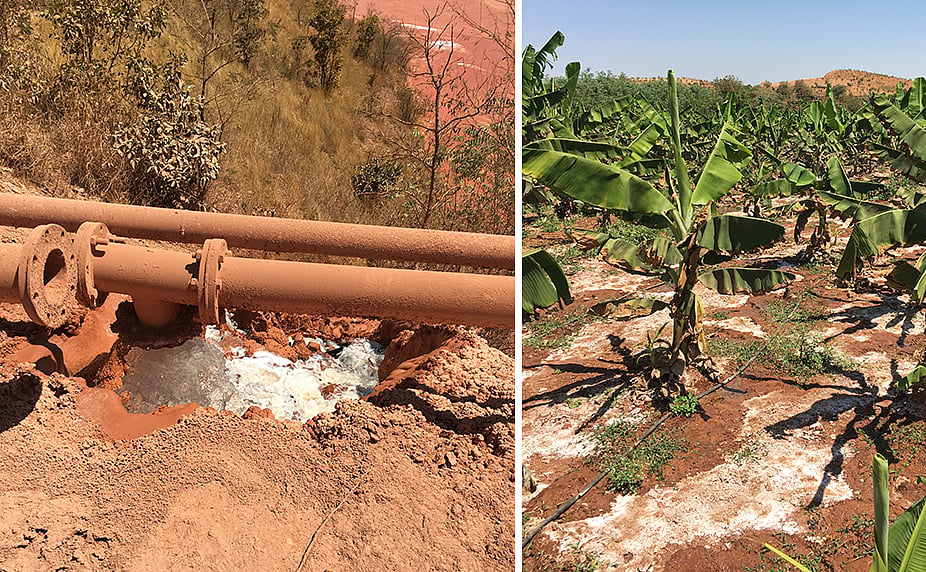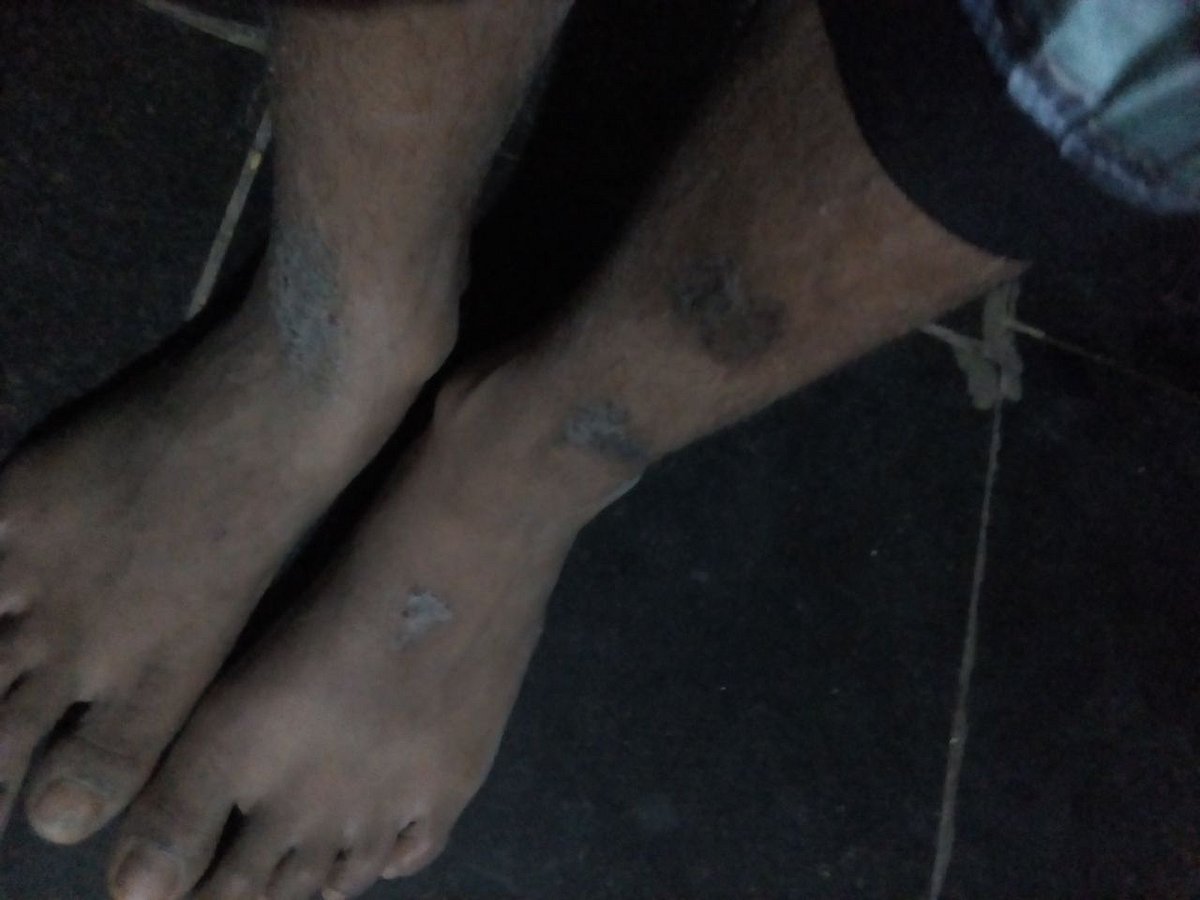Andhra Pradesh villagers say uranium mining contaminating soil, water
Department of Atomic Energy, which comes under PM Modi, has been under fire at uranium-rich Tummalapalle in Andhra Pradesh, as villagers complain of soil and water contamination with radioactive waste

There could be a storm brewing in the Department of Atomic Energy, headed by none other than Prime Minister Narendra Modi. Uranium Corporation of India Limited, which comes under the DoAE, has been under fire at uranium-rich Tummalapalle, near Kadapa in Andhra Pradesh. The villagers complain that UCIL’s project here is not only contaminating the soil and water in the region with the radioactive waste, it is also refusing to acknowledge the problem.
The quality of water and soil in Tummalapalle and the three villages surrounding it has deteriorated and presence of extremely high levels of heavy and trace metals such as uranium, barium, cobalt, lead, chromium and zinc has been detected. Additionally, the ground water table in the area has fallen considerably.
“Ever since UCIL started mining, the groundwater table receded due to mine water discharge. Before mining began, ground water was available at a depth of between 200 and 300 feet. Now, it has gone down to 1,000 feet and lower. Farmers were growing bananas using drip irrigation and were making about ₹2 lakh per acre per year. Now, with heavy groundwater contamination, the banana plants are drying up and not yielding bananas. Farmers’ incomes have completely dried up,” said K Babu Rao, retired chief scientist of the Indian Institute Chemical Technology.
Uranium ore in Kadapa is alkaline, unlike that at the Jadugudamine in Jharkhand, and is not suitable for acid leaching to extract uranium. “So, an alkali leaching process has been adopted. The technology for alkali leaching was developed at Bhabha Atomic Research Centre on pilot scale. It was scaled up to process 3,000 tonnes of ore per day. UCIL spent several years streamlining the process as per their annual reports,” explained Rao, who asserts that the main source of groundwater pollution is the tailings pond.
The tailing pond’s design, construction and operation have an important role in preventing seepage of pollutants into the groundwater.
“They have been dumping lots of chemicals, mainly sodium salts in the tailings pond (an earth-fill embankment used to dump mining by-products). As UCIL violated the conditions for the construction of tailings pond, chemicals percolated through the sediments and reached the groundwater table,” alleged EAS Sarma, former Power Secretary with the Government of India.
A farmer with his banana plantation near the tailings pond first noticed drying of plants and took the water and soil samples for analysis to a regional agriculture department laboratory. The laboratory categorised the water as unsuitable for irrigation because of high salt content. This happened in May 2017. Later, the problem spread to neighbouring villages. The protesting farmers took the matter to the YSR Congress Party MP Avinash Reddy, who took the matter to CK Asnani, chairman and managing director of UCIL.
“He came down in the last week of Feb 2018 and promised to pay compensation after BARC studied the problem. Farmers demanded a firm date and he gave March 9, 2018. But the meeting never took place. Meanwhile, the MP got into the thick of the Andhra Pradesh special package movement,” remarked Rao.
As can be seen in the lead photo above, there is a white deposit at the far end. These are salts deposited after evaporation of the water, say villagers. In the picture on the left below, the tailings pipe that discharges the slurry tailings at the top edge of the hillock can be seen. The liquid flows down the slope of the hillock. “It is a very bad engineering practice,” points out Rao. The picture on the right below is of salts accumulating in farmlands. As can be seen, the banana plants are dying without bearing fruit.


Earlier this year, in February, five farmers from the region sent water samples from their farm for testing to the Centre for Materials for Electronics Technology (C-MET).The results showed that uranium levels had increased up to 308.5 ppb or micrograms per litre, when the United Nations-certified limit for India is 30.Another major concern is also the increased sodium (salt) content in groundwater that is detrimental to agriculture. The levels of calcium and magnesium in the water are also on the rise. Calcium and magnesium contents are a measure of hardness of water.
The picture below is of a person affected by skin diseases which are becoming common in the region due to the increased level of Uranium and salts in the water and soil.

“The processing plant was commissioned in 2012 and in five years, groundwater has become contaminated. By the end of the life of the plant, that is another 25 years, what will be the condition if UCIL refuses to rectify the situation? Levels of other metals will also keep increasing due to leaching of tailings,” says a visibly worried Rao.
Ironically, prior to construction of the plant, the environmental clearance letter issued by the Ministry of Environment on February 21, 2007, included a condition:“The tailings pond shall be lined to prevent ground water contamination and overflow shall be collected, treated and recycled in the ore processing plant and mine for industrial use.”
Subsequently, the Consent for Establishment (CFE) issued on June 22, 2007, by Andhra Pradesh Pollution Control Board (APPCB) set the following conditions:“The thickened tailings Disposal (TTD) area shall be lined with Bentonite with minimum 500 mm layer with 250 micron of polyethylene layer with adequate protective layer of clay or sand of 250 mm.The pond shall be provided with a holding pond to collect drainage from deposit and also rainfall precipitation. The water from holding pond shall be pumped for treatment. There will no water escape from the pond.”

Things reached a flash point earlier in April when UCIL officials and Andhra Pradesh Police personnel misbehaved and detained scientist K Babu Rao and activists of the Human Rights Forum, who were on their way to meet the villagers who have been protesting and complaining about UCIL dumping chemical waste at a hillock nearby. After the complaints, UCIL and BARC authorities consented to ‘meet’ the villagers to ‘create awareness’ and to address their queries. Since much of the terminology used by UCIL is technical, the villagers approached activists for an effective interaction. Rao was only allowed to participate in the meeting with the scientists from UCIL and BARC after the villagers raised a hue and cry and EAS Sarma, the former power secretary,wrote a letter to the Kadapa collector and Nripendra Misra, the Principal Secretary to the Prime Minister.
“At the meeting, no one from UCIL spoke. BARC scientist Dr RM Tripathi, who acted as their spokesperson, denied any pollution arising out of UCIL’s activities. However, he admitted that the CMET analysis is correct,” pointed out Rao. Despite agreeing with the CMET findings, when Rao asked him why UCIL had issued a notification in the newspaper stating that the results of the analysis were erratic, he refused to entertain the question. Instead, Rao says that Tripathi wanted him to agree to the accumulating waste at the plant to be pumped to the tailings pond.
Towards the end of the meeting, Rao said, the General Manager of the plant, SR Pranesh, tried to justify not complying with the CFE issued by APPCB, stating that the Atomic Energy Regulatory Board had stricter norms for the tailings pond while APPCB had not specified the permeability of lining.
Attempts to reach UCIL chairman cum managing director CK Asnani and Ajay Ghade, executive director of UCIL (Operations and Projects, South), proved to be futile. An email was sent to their grievances department with the questions. There was no response when this issue went to print.
Follow us on: Facebook, Twitter, Google News, Instagram
Join our official telegram channel (@nationalherald) and stay updated with the latest headlines
- BARC
- Andhra Pradesh
- EAS Sarma
- Prime Minister Narendra Modi
- YSR-CP
- Nripendra Misra
- Ministry of Environment
- Uranium mining
- Department of Atomic Energy
- Uranium Corporation of India Limited
- Tummalapalle
- Kadapa
- Uranium
- Cobalt
- Lead
- Zinc
- Chromium
- heavy groundwater contamination
- Avinash Reddy
- Centre for Materials for Electronics Technology
- K Babu Rao
- Indian Institute Chemical Technology
- APPCB
- Andhra Pradesh Pollution Control Board
- Atomic Energy Regulatory Board